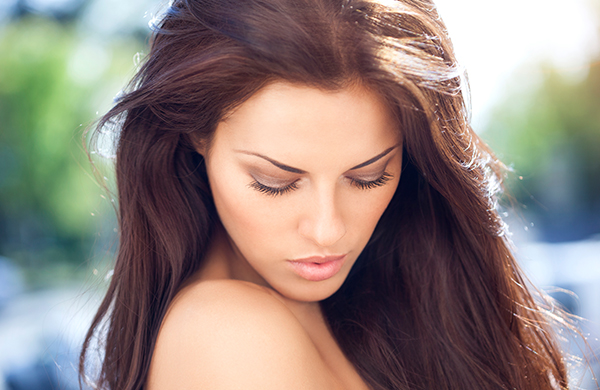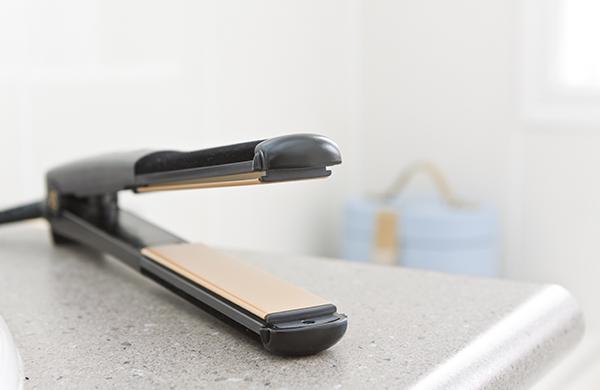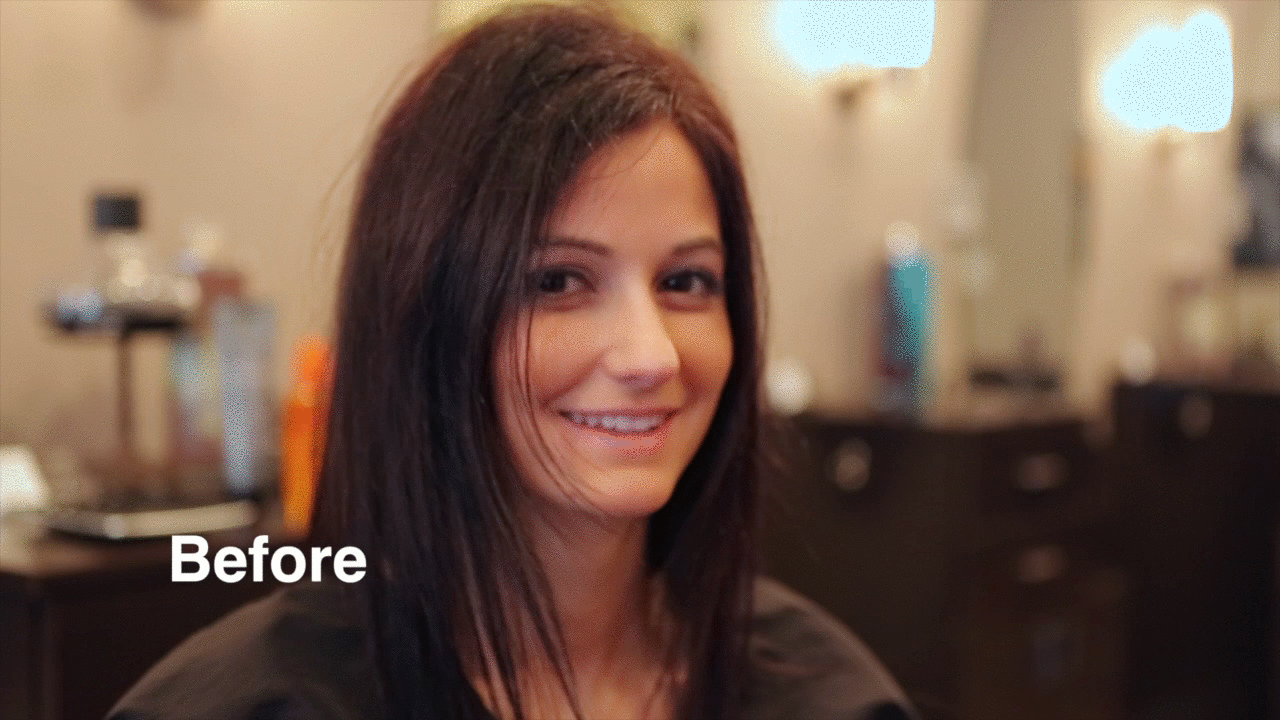
In the late 1960s, women would iron their hair with an iron. Not a flat iron—an iron iron. As in, on an ironing board. Typically used for clothes.
Mercifully, hair-straightening technology has come a long way since then. But no matter the decade, the grass is always greener on the other side: just as many straight-haired beauties pine for bouncy ringlets, so too do some of the wavy- and curly-coifed still long for sleek strands of their own.
Below, we’ve compared three of today’s most popular techniques for achieving straight hair, taking an investigative eye to what makes them ideal—or not—for different candidates. And we’ll make sure to direct you to a hair salon, not the laundry room.

Flat Ironing
Temporary

Also known as: Straight ironing.
Requires: A trip to the salon and one to two hours. Or, if you’re planning on doing it on a regular basis, a flat iron and some hand-eye coordination of your own.
Lasts: Until your next shampoo. Or until you walk outside, where it’s more humid. The answer depends on your hair type and product use, but the general rule is that moisture is flat ironing’s enemy.
Can I shampoo and swim? Maybe with a tight, stylish swim cap.
How it works: The stylist grips a small lock of hair between the iron’s heated plates, then moves it down the lock so the heat can reshape the hair.
Ideal for: Anyone looking to try straight hair for a few days (or just the night). Depending on the brand, those with tighter curls might not get the stick-straight results they desire. The flat iron is a good option for those who are wary of unfamiliar ingredient lists, since other methods have complex formulations.
Not ideal for: Those with very processed, fine, or heat-sensitive hair.
The cool part: There are many types of flat irons, and the technology is always advancing, so you can outfit your bathroom vanity with everything from ceramic plates to bright pink handles to built-in timers that turn the iron off when it’s not in use. Plus, many flat irons can be used as curling irons, too—check out some YouTube tutorials if you’re unfamiliar with this technique.
Keratin Hair Straightening
Semipermanent

Also known as: Various proprietary monikers, such as Brazilian Blowout and Keratin Complex.
Requires: A trip to the salon and two to four hours.
Lasts: Anywhere from two to six months, depending on the brand and hair type. Consult with your stylist to make sure you know what to expect.
Can I shampoo and swim? Not for 72 hours after the treatment, but after that, yes.
How it works: Different chemical products steep hair in keratin, filling in gaps on the shaft and coating the strand in smoothing layers of formula that a stylist then sets with heat.
Wach a video showing the process and the results with two of Groupon’s beauty experts.
Ideal for: If you have tight curls, you’d be looking to loosen, not straighten, your hair. If you have wavy or moderately curly hair, a keratin treatment can produce a sleek, straight texture. If you have wavy or straight hair, you should anticipate replacing frizz with gloss. Some stylists also like to use keratin before administering a short chop, like a pixie.
Not ideal for: Super-fine or damaged hair—partly due to the product formulations, but also because the process requires a flat iron. (Keratin smoothing can work on color-treated hair, but ask your stylist to evaluate your hair’s health first.)
The cool part: It’s customizable. If you just want to soften, but not straighten, your texture, your stylist can help you use a gentler formula.
Thermal Reconditioning
Permanent

Also known as: Japanese hair straightening.
Requires: A trip to the salon and as many as eight hours.
Lasts: Until it grows out or you cut it off. Some texture might subtly reappear, in which case you might book a three- to four-hour touchup session.
Can I shampoo and swim? Just as with keratin, this method has a three-day no-water rule afterward. You also can’t put your hair in a ponytail during this time, since it will “dent” your locks. But after that delicate time period, the curl is not returning.
How it works: Chemical products break the curl structure of the hair, which is then rinsed, blown dry, and flat-ironed before the stylist applies a neutralizer.
Ideal for: Those with loose, bulky curls, including ethnic hair types.
Not ideal for: Those with tight, kinky curls and anyone who's bleached or processed their hair in the past two years. Mention all past treatments to your stylist, even if it’s something that seems gentle, like henna.
The cool part: Did we mention it essentially lasts as long as the treated hair does?

Check out more hair transformations on the Guide:
How a editor went from her usual red locks to a delightfully pastel pink hair color. It only took seven months.
Thinking of donating hair? Learn how to prep for the big chop and how to ensure your hair doesn’t get thrown in the trash.






